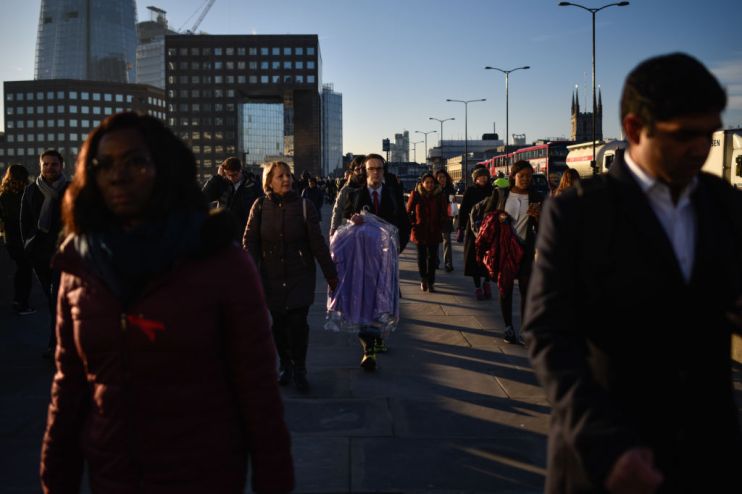UK unemployment rate falls close to 45-year low, but wage growth slows

The UK’s unemployment rate fell back close to a 45-year low between August and October, according to official data today, but economists warned the new government must solve the “puzzle” of flagging wage growth.
The unemployment rate fell to 3.8 per cent to register just 1.28m people who are unemployed, a fall of 93,000 or 0.3 percentage points year on year.
That helped the UK employment rate soar by 109,000 people to hit 27.7m in paid employment, a record high of 76.2 per cent, the Office for National Statistics (ONS) revealed.
Read more: Closing the wage gap: Why people of colour earn less in tech
Wage growth slows
However, wage growth slipped from its 3.9 per cent peak recorded between May and July to 3.2 per cent between August and October, hurt by “unusually high” bonuses paid a year ago.
“The sharp fall in the main measure of year-over-year growth in average weekly wages was driven by weakness in bonus payments, which are noisy,” Samuel Tombs, chief UK. economist at Pantheon Macroeconomics, said.
“Admittedly, four consecutive month-to-month increases in wages excluding bonuses of 0.2 per cent suggest that the trend might be weakening. But with the unemployment rate remaining extremely low and all other secondary measures of slack also greatly depleted, workers have strong bargaining power.”
But Pawel Adrjan, UK economist at job site Indeed, said the low wage growth has left Boris Johnson’s new government with an “unsolved puzzle”.
“With the employment rate still pushing the envelope of what is possible – clocking yet another record – and unemployment very low, wages should be rising faster than this,” he said.
Read more: UK employment driven by income squeeze, finds report
“Behind the apparently robust headline numbers, warning lights are beginning to glow. The total number of vacancies is shrinking as Britain’s job creation boom slowly runs out of steam.
“The UK narrowly escaped a recession in 2019, and business confidence remains fragile, meaning many employers have put off hiring decisions. As the UK steps into its non-EU future, few expect a sudden jump in employers’ willingness to hire.”
Unemployment drops, but hiring enters slowdown
The Institute of Directors’ chief economist, Tek Parikh, highlighted the lack of movement in the UK employment rate quarter to quarter, warning it shows firms are now cutting back on hiring as they struggle to find the skills they need.
“Uncertainty and slowing global growth have also made businesses a bit more cautious in their recruitment plans, and vacancies are expected to continue falling into 2020.” he added.
The IoD has urged the new government to invest in initiatives to drive up business productivity.
Parikh said: “Businesses are eager for the details behind flagship policies like the National Skills Fund and reform to the Apprenticeship Levy.”
“As demand for new workers has slowed, it is also inevitable that wage growth has also decelerated a little recently,” Parikh added.
Labour market proves ‘resilient’
Jing Teow, an economist at PwC, hailed the UK’s robustness in the face of much uncertainty surrounding Brexit and the election.
“Today’s data shows that the labour market remains fairly resilient despite the uncertain economic and political environment,” Teow said.“However, there are signs that the labour market is cooling, partly as a result of the rise in real wages and unemployment falling to near record lows. Vacancies have also continued on a downward trend since peaking in January, while earnings growth appears to be levelling off following the peak at around the second quarter of this year.”